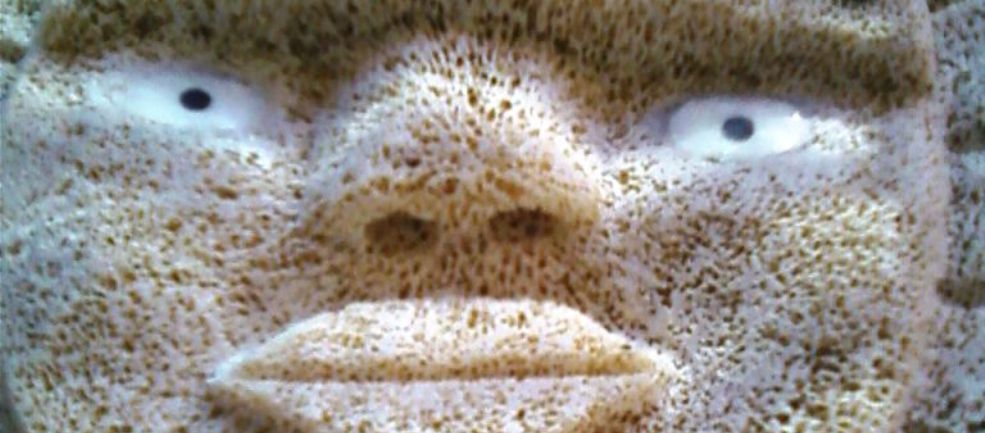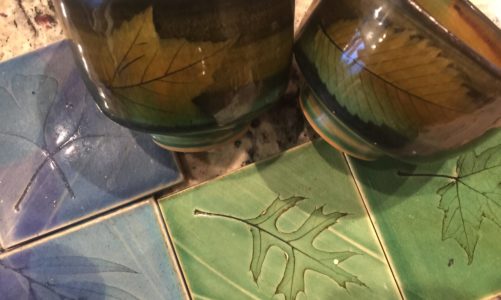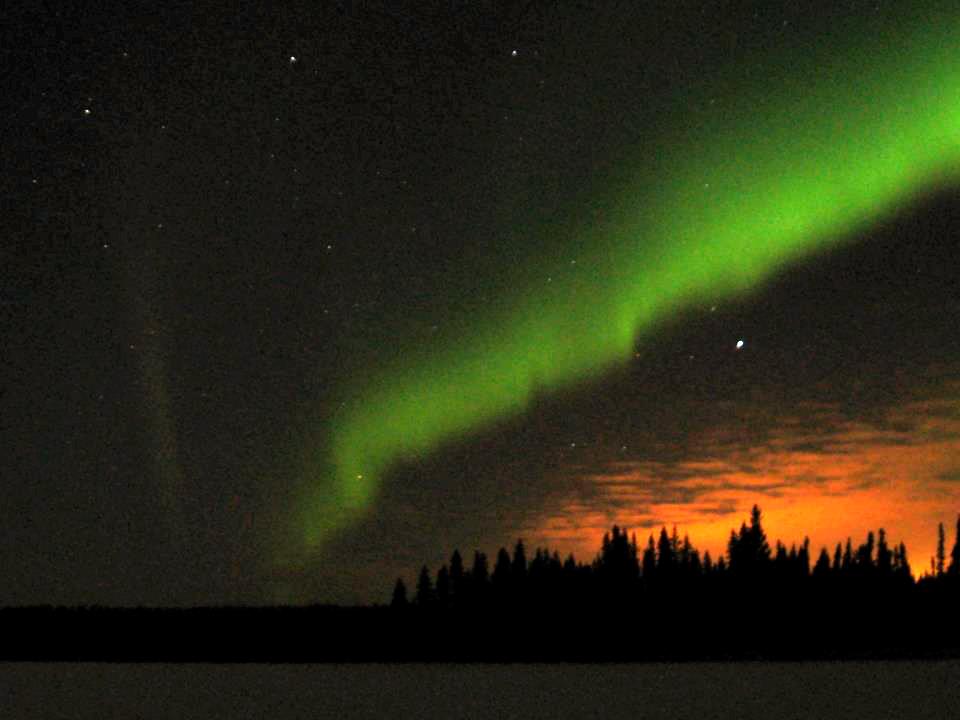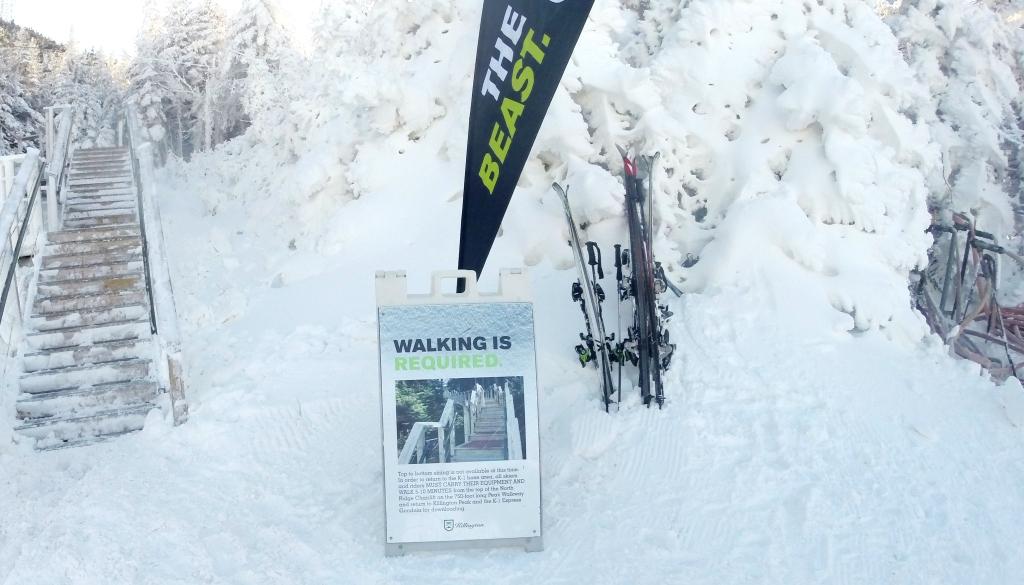What I find myself doing in Alaska is looking for words: big, superlative words. I need words for snowier, and larger, and colder, and more infinite (which by definition can’t exist, but I find myself needing a word for it, anyway). Everything is bigger here, from the salmon to the grizzly bears to the mountains to the tall tales. And self-image. In that regard, these guys make Texans look like Lilliputians.
In Your Bucket Because…
- Geography and culture make Alaska unique — which means the shopping is unique.
- You’ll never find a place to buy better cold-weather gear.
- There’s something for everyone from cruise ship passengers to hard-core adventurers.
For souvenir shoppers, Alaska offers similarly grand scope: Native Alaskan crafts range from rough whalebone carvings to sophisticated contemporary art, much of which references traditional culture but includes contemporary aesthetics. You can pick up a fur coat made with eight different kinds of pelts (okay, not my thing, but it’s hard to ignore) that will keep you warm till 50 below. Or you can bring home food suitable for a grizzly bear: salmon, honey, and berries.
Souvenir Shopping for Native Alaskan Crafts
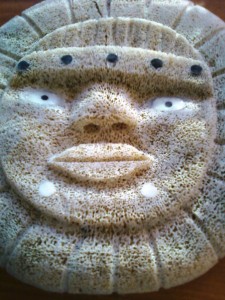
- Masks, carvings, totem poles, baskets, antler carvings, and drums are staple items at tourist shops, with better quality being available in galleries and at the University of Alaska’s Museum of the North Gift Shop in Fairbanks, which carries a variety of high-quality art as well as craft objects from all over the state.
- Smaller scale carvings in wood, stone, whalebone, resin, or polymer clays are often decorated with bits of ivory (walrus tusks) or feathers. Common themes include polar bears, seals, waterfowl and raptors. Some lovely and complex carvings show scenes of traditional Alaskan life, for instance, a fisherman or hunter in a canoe. These can be quite intricate and detailed, as well as expensive (several hundred dollars, depending on size and complexity).
- Masks and totem poles are native to coastal southeastern Alaska, where cruise ships pull into dock. Small scale models of totem poles are made for the tourist trade at prices starting around $40, Masks may be made of painted wood, whalebone, or caribou skin. The spirit masks, dream catchers, and spirit wheels are authentic parts of the native Alaskan culture. They both represent legends and bring together the physical and spiritual worlds. Prices might start at around $100 for a simple whalebone carving, and go up over $1000 for a full-fledged unique spirit mask.
- Finally, check out the jewelry: It can be made of ivory (walrus tusk), abalone (called glacier pearl), jade, opals, and hematite (called Alaskan black diamonds). The stones are often set in gold or silver formed into native design patterns or themes.
As you should in any tourist market, check the origin of the item you plan to buy to be sure it’s made in Alaska.
Souvenir Shopping for Alaskan Dolls
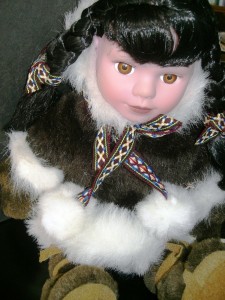
Made-in-Alaska dolls in native dress are beautiful small art pieces, dressed in furs and tanned hides; Prices start at about $150 and go up. If you’re buying a doll for a child to play with, the mass-produced dolls are more affordable (around $40). Unfortunately, they tend to have white skin — not exactly an authentic look.
Buying Furs in Alaska
As someone who doesn’t wear fur, and doesn’t much care for the idea of it, let me just say that in Alaska, fur is not a fashion statement: It’s a way to deal with temperatures that can sink to negative double-digits (Fahrenheit) and stay there for weeks at a time. And it’s part of Alaskan culture. So while I wouldn’t actually buy a fur, in Alaska, I was willing to watch a fur auction from afar.
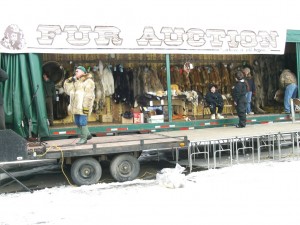
The Alaskan Fur Rendezvous (called Fur Rondy by the locals) takes place in late February and early March, during the Iditarod in Alaska. It’s a great chance to see a fur auction at work, and prices can actually be very low. Items range from tanned hides to finished rugs, coats, mukluks, and jackets in both contemporary and traditional native Alaskan styles. A warning: what looks right at home in the wilds of Alaska might be a bit out of place in your New York or San Francisco apartment. Think twice.
While you’re at Fur Rondy, swing by the Iditarod Headquarters in downtown Anchorage to check out race souvenirs. In addition to mugs and T-shirts, you’ll find some jewelry items, jackets, an assortment of traditional Alaskan souvenirs, as well as a nice selection of books for both adults and children. One unusual item: headbands and small pieces of clothing made of dyed and knitted sled dog hair (about $30).
Shopping for Alaskan Food Souvenirs
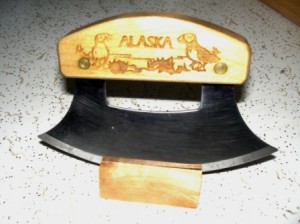
When you buy a typical basket of Alaskan food souvenirs, you might feel that someone got you confused with a grizzly bear. You’ll be taking home salmon jerky or smoked salmon, reindeer sausage, as well as native fireweed honey (the bees pollinate the fireweed) and Alaska wild berry jams and jellies.
A food-related souvenir is the traditional ulu, a knife with a rounded blade that is used by rocking back and forth. Ulus come in different sizes, depending on what you want to use them for. They are excellent for chopping garlic and small slices of vegetables.
My haul from a winter trip to Alaska included a whalebone mask, a drum, an ulu, some food, children’s’ books about sled dogs, a head band made of sled-dog hair, a pair of “Bunny boots” (military cold weather boots) along with a photo of the northern lights and a photo of the clock/thermometer at a Fairbanks bank reading negative 38.
Practicalities
- The Museum of the North in Fairbanks has an interesting gift shop with authentic Alaska art; no need to worry about “made in China” here.
- If you’re traveling to Alaska in winter, the Iditarod headquarters in Anchorage has dog-sledding themed souvenirs available; proceeds benefits the race. Downtown Anchorage has a large number of souvenir shops. You’ll also find plenty in the cruise ship ports.
